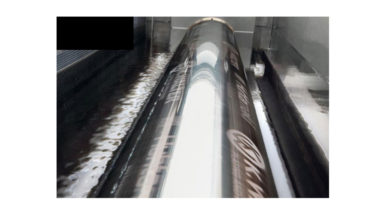100,000 Tons of Paper Imported Yearly by Government Printing Presses
Amr Khadr, Head of the Paper division of the Cairo Chamber of Commerce in Egypt confirmed that local paper prices have remained stable since last June. He added that the price of domestic papers have remained at 5,800 Egyptian pounds per ton, mainly due to the stable global paper prices.
Khadr mentioned that the Egyptian market imports about 40% of the total paper consumed, while the remaining 60% is produced locally. The major markets from which paper is imported include China, Brazil, Indonesia, India and Russia. It is estimated that around 450,000 tons of paper are imported annually.
Khadr added that the local industry plays a limited role in producing printing paper. He pointed out that paper book covers and even newsprint are imported from abroad, and that the total volume of paper imported by government news organizations comes to around 100,000 tons per year, especially as these institutions are involved in the printing of many newspapers.
Meanwhile Khadr denied that frequent blackouts in the past month have affected domestic paper production. He said that in Egypt the total volume of paper produced by the company Misr Edfu is about 60,000 tons per year, while Qena Paper Industry Company manufactures about 100,000 tons per year. He mentioned that the worker’s strike in the factory of Edfu during the month of May has resulted in decreasing the total volume of paper produced and has increased the price of paper by an estimated 25%. He added that another 10% was hiked when the Qena factory stopped production.
He also revealed that recent price hikes has pushed the price of paper per ton. Paper price reached 6,500 Egyptian pounds per ton for Cushitic paper and printing paper, and the price for a ton of duplex paper came to about 5,500 pounds, while white paper price rose to about 6,200 pounds.
Talking about the possibilities of expanding the paper production at local factories, Khadr said that they faced many difficulties while trying to expand the paper factories. Explaining the reasons, he said, “The factories which produce paper locally depend on pacifier paper, which is normally produced from the extracts of sugar cane. This is usually procured from sugar cane companies and the cost of this raw material account to about 20 to 30% of the total paper cost. Due to the high cost incurred in obtaining wood pulp, it’s normally imported from countries like Brazil or the United States, which results in increasing the cost of paper manufactured locally.”
Talking about the volume of printing in Egypt, Khadr explained that the cost incurred in printing textbooks for the current academic year of 2012-2013 amounted to about 1.1 billion Egyptian pounds. He added that about 33% of the work was done by the private sector industry, for example Al Amiriah press, while the remaining quantity was done by public sector presses. He pointed out that the total printed textbooks consumed about 75 tons of Crochet paper, and added that the local paper factories have last year sourced paper at a price range of 5800 to 6000 pounds per ton.
Khadr further pointed out that recently there has been a noticeable decline of about 60% in the import of paper, which has impacted the paper trade in domestic market. He denied rumours that that a US$ 250 million plant was set up in coordination between the paper divisions and the Cairo Chamber of Commerce. He stressed that the Cairo Chamber had launched an education development project, which aims to develop schools in the region. He said that an estimated figure of 500,000 Egyptian pounds will be used for the construction and maintenance work of schools and said that the project will be completed by the end of the current academic year.
He added that the print volume during the recent elections had dropped compared to the previous year, as there was a strong competition from electronic advertising. He revealed that the printing division under the Chamber of Commerce has invited major printing companies from Europe, Africa and Asia to explore the printing market in Egypt. He hoped that with increased participation from foreign countries the printing activities in Egypt will gain momentum.





